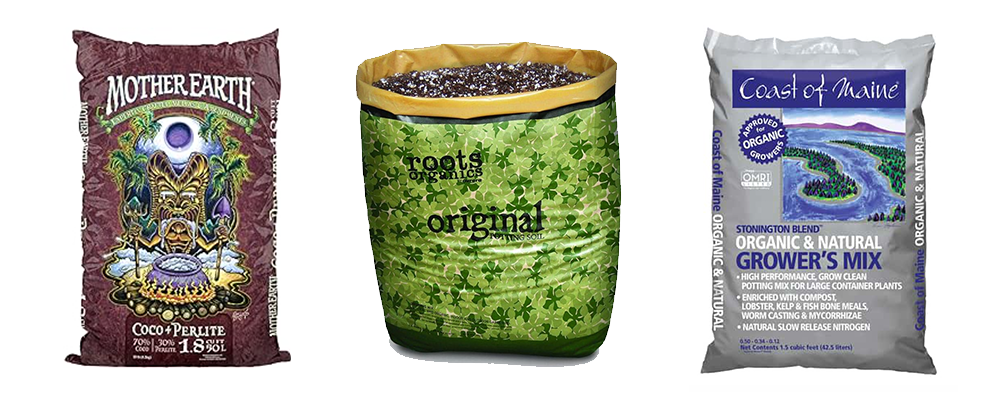Content on Fly Budder is for educational purposes only. All cultivation is conducted in accordance with applicable laws. No products, services, or items are offered or sold through this site.
From Coco Coir to Living Soil
As a novice cultivator, one of the most important lessons I’ve learned is that the choice of growing medium can make or break your initial grow experience.
5/8/20244 min read


The medium you choose is more than just a place for your plants to anchor their roots—it directly impacts their health, growth rate, and ultimately, the quality of your harvest. Over the course of my cultivation journey, I've experimented with a few different mediums, each with its unique benefits and challenges. In this article, I’ll walk you through my experiences with coco coir, organic potting soil, and living soil, and share insights into other popular methods like Deep Water Culture (DWC) hydroponics.
First Grow in Coco Coir
My cultivation journey began with coco coir, a medium made from the fibrous husks of coconuts. Coco coir is a popular choice among new growers for several reasons. It’s lightweight, easy to handle, and has excellent water retention properties while also providing good drainage and aeration. This balance helps prevent overwatering, a common mistake for beginners.
One of the biggest advantages of coco coir is its inert nature. It doesn’t contain any nutrients, which means you have full control over what your plants receive. However, this also means that you’ll need to provide a complete nutrient regimen throughout the grow. For my first grow, this was both a blessing and a curse—I loved the control, but it required me to stay on top of my feeding schedule to ensure my plants got everything they needed.
Overall, my experience with coco coir was positive. It provided a solid foundation for my plants, and the learning curve wasn’t too steep. The medium’s consistency in maintaining moisture while preventing root rot gave me the confidence to move forward with my next grow.
Second Grow: Roots Organic Potting Soil
For my second grow, I decided to switch things up and try Roots Organic Potting Soil. Unlike coco coir, potting soil is not inert—it’s packed with organic matter and nutrients that help support plant growth right from the start. This was a major appeal for me as I was looking for a medium that required a bit less hands-on nutrient management.
Roots Organic Potting Soil is a rich blend of ingredients like perlite, peat moss, and composted forest material, among others. It provides a more forgiving environment for plants, especially in the early stages. One of the key benefits is that the soil’s natural composition buffers pH levels, reducing the likelihood of nutrient lockout, a problem that can occur when the pH is out of balance.
However, using potting soil does come with its own set of challenges. Because it contains nutrients, there’s a risk of overfeeding if you’re not careful with additional fertilization. In my experience, this medium required a bit more monitoring of nutrient levels and watering frequency compared to coco coir.
Despite these challenges, the organic potting soil helped my plants thrive with a strong start, and the organic components seemed to contribute to a more robust flavor profile in the final product.
Third Grow: Coast of Maine Living Soil
For my current grow, I wanted to explore a more sustainable and organic approach, so I opted for Coast of Maine Living Soil. Living soil is teeming with microorganisms that work symbiotically with your plants, breaking down organic matter into nutrients that are readily available for uptake. This method is often considered the most natural way to grow, as it mimics the processes that occur in nature.
One of the main benefits of living soil is that it requires minimal input from the grower in terms of feeding. The soil itself is a complete ecosystem, providing all the nutrients your plants need throughout their life cycle. Additionally, living soil helps improve the flavor and aroma of the final product, as the complex interactions between the soil’s microorganisms and the plant roots lead to a richer terpene profile.
However, living soil is not without its challenges. It requires a bit more space and careful management of the soil’s health, ensuring that the microbial life remains active and balanced. Additionally, the initial cost can be higher compared to other mediums, but this is offset by the reduced need for bottled nutrients.
So far, my experience with living soil has been incredibly rewarding. The idea of cultivating a garden that is self-sustaining and closely aligned with natural growing practices resonates deeply with me, and I’m excited to see how this method enhances the quality of my current grow.
Other Methods: Deep Water Culture (DWC) Hydroponics
While I haven’t yet dived into hydroponics myself, Deep Water Culture (DWC) is a popular growing method that’s worth mentioning. In DWC systems, plants are suspended in net pots with their roots submerged directly in a nutrient-rich, oxygenated water solution. This method allows for rapid growth and potentially larger yields since the roots have direct access to oxygen and nutrients.
One of the primary benefits of DWC is the ability to fine-tune nutrient levels and pH with precision. Additionally, because the roots are constantly exposed to oxygen, plants can grow faster compared to traditional soil methods. However, DWC requires careful monitoring of water temperature, pH, and nutrient levels to prevent issues like root rot or nutrient deficiencies.
Comparing the Mediums
Each growing medium I’ve used so far has offered unique advantages, shaping my understanding of cannabis cultivation in different ways:
Coco Coir: Excellent for beginners, offering good control over nutrients and moisture, but requires consistent feeding.
Organic Potting Soil: Provides a nutrient-rich start with natural pH buffering, but demands careful monitoring to avoid overfeeding.
Living Soil: A sustainable, self-sustaining option that enhances flavor and aroma, though it requires a bit more initial setup and soil maintenance.
As I continue my cultivation journey, I’m excited to explore even more growing mediums and techniques. My upcoming YouTube video will showcase my first grow in coco coir, offering a closer look at the challenges and successes I experienced along the way. Whether you're just starting out or are curious about trying new methods, I hope my experiences help guide your own cultivation journey. After all, the medium is the foundation of any great grow—choosing the right one is the first step toward success!
© 2025. FLY BUDDER - All rights reserved.


